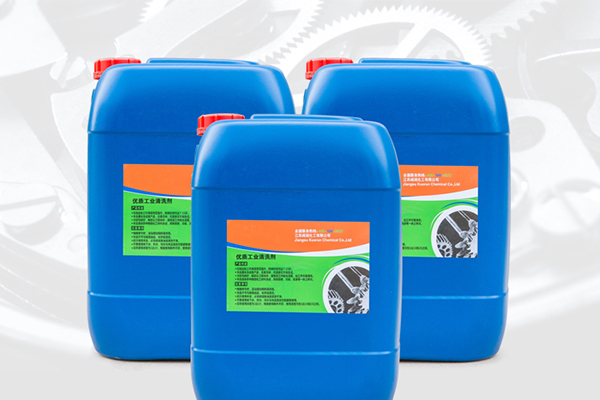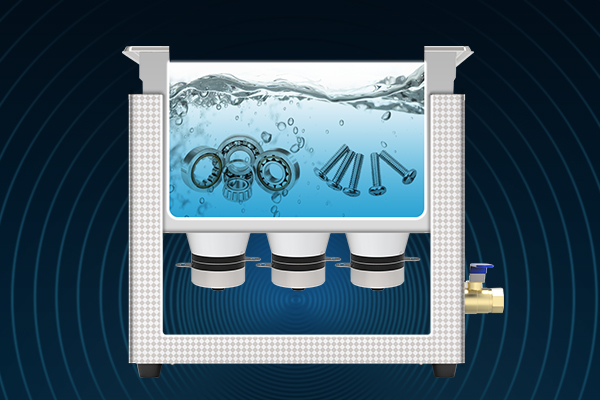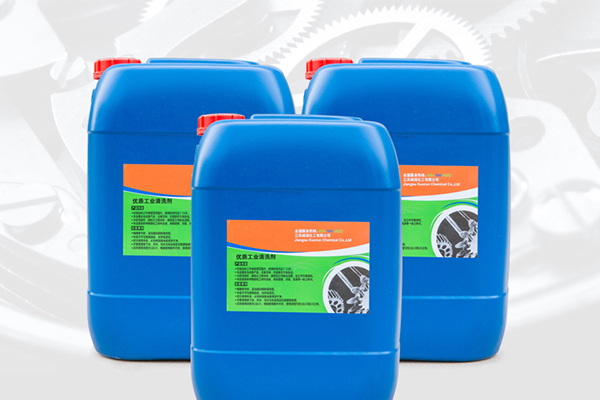In industrial and precision cleaning processes, ultrasonic cleaners are highly favored for their exceptional cleaning efficiency and non-destructive nature. However, cleaning performance depends not only on the ultrasonic equipment but also on the type of detergent used. Acidic and alkaline detergents are two common options for ultrasonic cleaning, each suitable for different materials and types of contaminants.

1. Characteristics and Applications of Acidic Detergents
Acidic detergents are primarily composed of inorganic or organic acids and are highly effective at dissolving and removing contaminants, especially for rust and oxide layer removal. Common acidic detergents include phosphoric acid, nitric acid, and acetic acid, often with added corrosion inhibitors to protect substrates.
Key Features
- Strong dissolving ability: Acidic detergents are highly effective in dissolving metal oxides and mineral deposits, making them ideal for removing rust and oxide layers.
- Compatibility with certain metals: Suitable for materials like aluminum and copper, acidic detergents can enhance surface smoothness after cleaning.
- Corrosiveness: Acidic detergents may corrode materials such as stainless steel, requiring the addition of corrosion inhibitors depending on the substrate.
Applications
Acidic detergents are mainly used in scenarios requiring rust removal, oxide layer elimination, or descaling, including:
- Rust removal for metal parts and molds: Effective for surface treatment of materials like aluminum alloys and copper components, removing oxidation effectively.
- Metal pretreatment in electroplating: Cleans metal surfaces of impurities, improving subsequent coating adhesion.
2. Characteristics and Applications of Alkaline Detergents
Alkaline detergents are primarily composed of sodium carbonate, sodium hydroxide, phosphates, and other alkaline components. They are excellent at emulsifying oils and suitable for removing stubborn grease and organic contaminants. Additionally, they are generally mild on various materials and less likely to cause surface damage.
Key Features
- Exceptional oil and dirt removal: Alkaline detergents can quickly emulsify grease, making them suitable for cleaning lubricants and cutting fluids from mechanical parts.
- Material safety: Safe for metals, glass, ceramics, and other materials, they are particularly suitable for precision devices requiring surface protection.
- Versatility: Concentration can be adjusted to meet various cleaning needs, making them widely applicable in industries such as machinery, electronics, and automotive.
Applications
Alkaline detergents are commonly used in industrial cleaning scenarios requiring oil and dirt removal, including:
- Cleaning of automotive and mechanical parts: Effectively removes grease and carbon deposits, maintaining clean surfaces.
- Cleaning of precision instruments and electronic components: Provides gentle cleaning for stainless steel, plastics, and similar materials.
3. Comparison of Acidic and Alkaline Detergents
| Detergent Type | Acidic Detergents | Alkaline Detergents |
|---|---|---|
| Cleaning Ability | Excellent for rust and oxide removal | Superior oil and dirt removal |
| Impact on Materials | May corrode certain metals; use inhibitors | Mild and safe for most materials |
| Common Applications | Rust removal, oxide layer elimination | Grease cleaning, precision cleaning |
| Environmental Considerations | Requires careful wastewater handling | Environmentally friendlier |
| Cost | Moderate, but requires handling precautions | Lower, safe, and easy to use |
4. How to Choose the Right Detergent Type
- Based on Material:
For materials susceptible to acid corrosion (e.g., some stainless steels and iron alloys), alkaline detergents are recommended. For aluminum and copper requiring oxide removal, acidic detergents can be used in moderation. - Based on Cleaning Needs:
For mechanical parts contaminated with grease, alkaline detergents offer superior performance. For components with rust or oxidation from prolonged use, acidic detergents are more effective. - Considering Safety and Environmental Requirements:
Alkaline detergents are safer to handle and require less stringent precautions for equipment and personnel. Acidic detergents demand proper protective measures and wastewater treatment to minimize environmental impact.
5. Precautions During the Cleaning Process
- Control Detergent Concentration:
Both acidic and alkaline detergents require strict concentration control to avoid excessive chemical reactions that may damage workpieces. Proper concentration also extends the detergent’s lifespan, improving cost efficiency. - Temperature’s Effect on Cleaning:
Optimal temperature enhances the chemical activity of detergents during ultrasonic cleaning. Acidic detergents perform best at 40–60°C, while alkaline detergents are most effective at 50–70°C. - Wastewater Treatment:
Post-cleaning wastewater must be treated appropriately. Acidic detergent waste, containing acidic substances, requires neutralization before discharge. Alkaline detergent waste is easier to handle but must also comply with environmental regulations.
Choosing between acidic and alkaline detergents for ultrasonic cleaning depends on the specific material, cleaning requirements, and environmental considerations. Proper selection and usage ensure optimal cleaning results while maintaining safety and efficiency.



